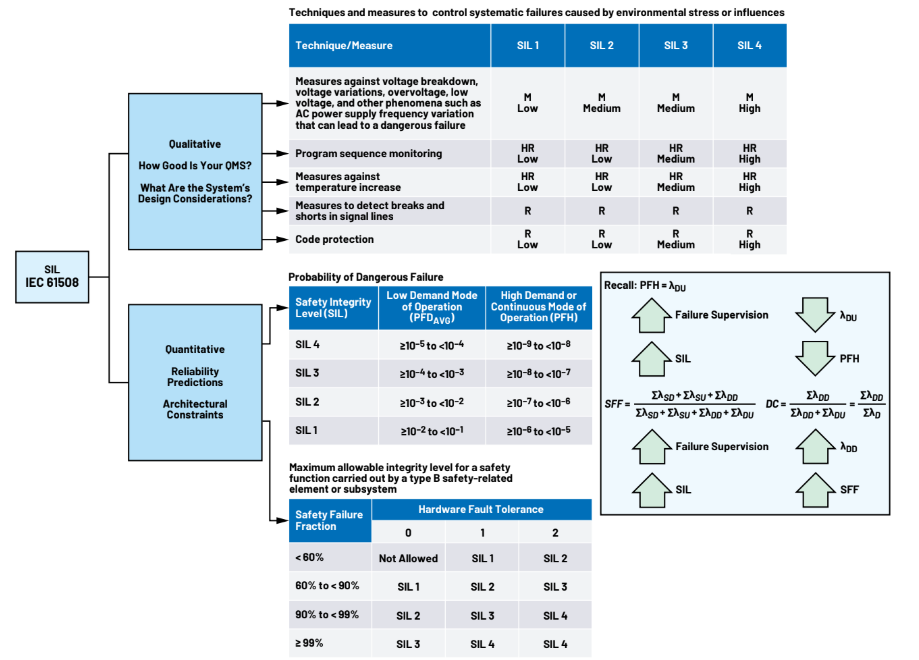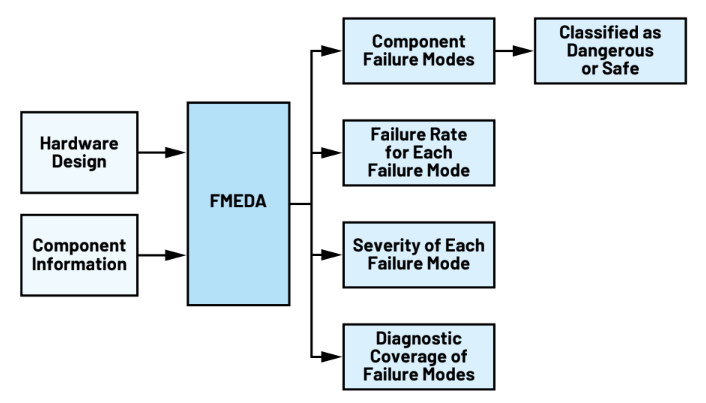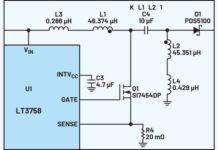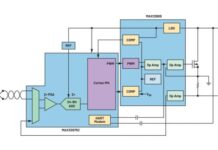Abstract
Diagnostic functions, such as power supply monitors, play a crucial role in identifying hazardous failures in electronic, electrical, and programmable electronic safety-related systems (SRS). While such components are not mandatory to be functional safety rated for compliance with IEC 61508 under the current revision, utilizing a functional safety-compliant part when designing an SRS offers several advantages. For this reason, this second part of the series discusses six benefits of using a SIL-rated power supply monitor when designing a system covering industrial functional safety.
Introduction
This is the second article of the series discussing industrial functional safety compliance through high performance voltage supervisory circuits is discussed. This article explores the significance of employing functional safety-compliant diagnostic functions for compliance. It will cover six key aspects: availability of failure mode, effects, and diagnostics analysis (FMEDA) information; integrated safety features; on-chip diagnostics; future-proofing against the upcoming revision of the IEC 61508; consideration of other standards; and the views of external assessors, all underscoring the benefits of using SIL-rated power supply monitors such as the MAX42500.
The Basic Functional Safety Standard and Beyond
Part 1 of this series highlighted the role of diagnostics in meeting both the qualitative and quantitative demands of the basic functional safety standard as seen in Figure 1. For qualitative considerations, the implementation of power supply monitors is mandatory regardless of the safety integrity level (SIL). But for quantitative requirements, there are two main considerations: reliability predictions and architectural constraints. Reliability predictions assess the system’s average probability of dangerous failure rate, which can either be the average probability of dangerous failure on demand (PFDavg) for low demand operation or the average frequency of dangerous failure per hour (PFH) for high demand operation. For the purpose of discussion, PFH is used. Meanwhile, architectural constraints are affected by the safe failure fraction (SFF) and redundancy requirements. The integration of diagnostic functions enhances these metrics by identifying random hardware failures. Consequently, any supervisory IC that meets the required specifications can be used, as SIL ratings are determined at the system level.

Implementing a safety project often requires more effort compared to a nonsafety project due to the stringent demands of the safety lifecycle. However, there are effective strategies that can enhance both the project timeline and functional safety compliance. One such strategy is the use of components that have already been developed according to the IEC 61508. Although not mandatory under IEC 61508, this approach offers several advantages that exceed the basic functional safety standard requirements. These advantages include the following.
It Has Its Own FMEDA
Power supply monitors that adhere to IEC 61508 standards include a safety manual detailing their FMEDA. The FMEDA process involves examining the failure modes of a system to identify the potential failure causes and their effects on the system (Figure 2). Whether applied at the component level or at the system level, an FMEDA facilitates the demonstration of compliance with a functional safety standard such as the IEC 61508, addressing both its qualitative and quantitative requirements.

The requirements for a safety manual for compliant items are outlined in IEC 61508-2:2010. This information facilitates the IC integrator to more easily complete their FMEDA.
Read the full article here.

















